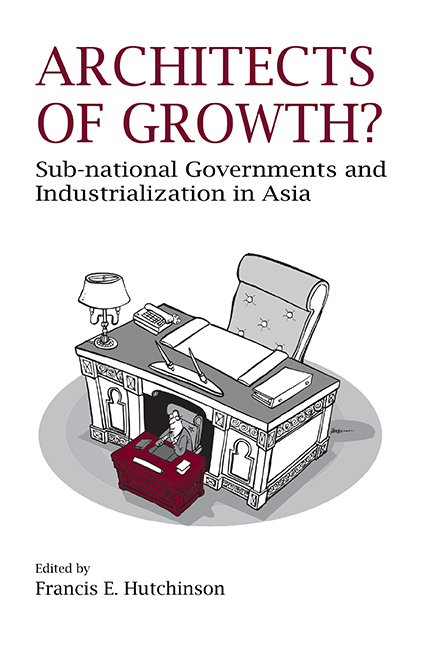Preface and Acknowledgements
Published online by Cambridge University Press: 21 October 2015
Summary
Conventional academic and practical approaches to economic policy-making focus on the national level. However, over the last three decades, this nation-centred approach has been called into question by the re-scaling of economic, political and social processes. Decreasing barriers to trade, ever further-reaching production networks, greater flows of information, and demands by citizens for more participation in public life have challenged the primacy of the nation-state.
In addition, many national-level governments now have to contend with energized and proactive sub-national governments. In part, this is due to policies enacted by national governments themselves. Over the past decades, the “Silent Revolution” of decentralization has swept the globe, as central governments (with some notable exceptions) have devolved responsibilities to state, provincial, and municipal governments.
Furthermore, economic globalization seems to be heightening the relationship between location and economic activity. Despite investment being mobile, economic activity and, in particular, innovation have remained very sensitive to geography and the local institutional environment. This is seen in the emergence of high-performing regional economies in industrialized as well as industrializing countries.
These trends have implications for sub-national governments. While state and provincial governments may have gained in importance, the challenges facing them have also increased. More mobile investment along with heightened competition in many sectors means that policy-makers must now, not only attract investment, but also work hard to retain it. Firms that have problems getting reliable suppliers, securing appropriate labour, or obtaining licences will relocate to more amenable locations — often in a neighbouring state or province. Thus, competition between sub-national governments for investment is also on the rise, as they strive to outdo each other by providing incentives and specialized infrastructure.
However, while state and provincial governments have acquired new visibility and additional responsibilities, they are different from their national counterparts in that they do not have a wide range of tools or a large quantity of resources at their disposal. In addition, they are embedded in a specific power relationship with their national governments, and must reconcile central priorities with those of their constituents.
Conversely, despite their relative paucity of revenue and governmental responsibilities, state and provincial governments are usually responsible for a range of public services that are important to firms
- Type
- Chapter
- Information
- Architects of Growth?Sub-national Governments and Industrialization in Asia, pp. xiv - xviPublisher: ISEAS–Yusof Ishak InstitutePrint publication year: 2013

